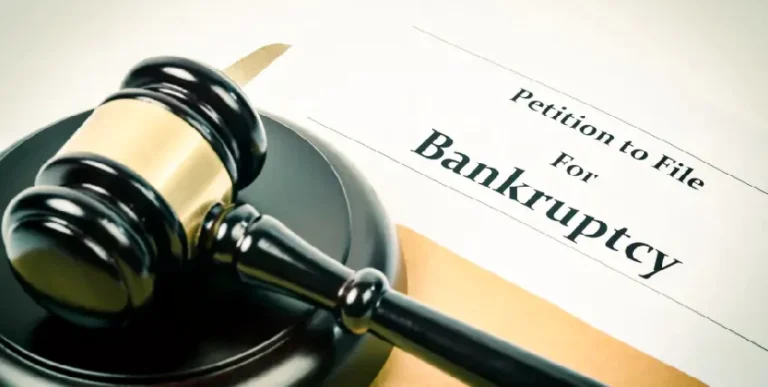Filing for bankruptcy can be a daunting and stressful experience, but understanding the process can help alleviate some of the anxiety. This step-by-step guide will walk you through the entire bankruptcy process, explaining each stage and what to expect along the way. Whether you’re considering Chapter 7 or Chapter 13 bankruptcy, this guide provides a comprehensive overview to help you navigate your financial journey.
Understanding Bankruptcy: What Is It and Why Consider It?
Bankruptcy is a legal process designed to help individuals or businesses struggling with unmanageable debt. It provides a structured way to either eliminate debts or create a repayment plan under the protection of the federal bankruptcy court. People consider bankruptcy for various reasons, such as overwhelming medical bills, loss of income, or excessive credit card debt. The process can offer a fresh financial start but can also have long-term effects on credit and personal assets.
Types of Bankruptcy: Chapter 7 vs. Chapter 13
Chapter 7, also known as liquidation bankruptcy, involves selling non-exempt assets to pay off creditors and discharging remaining debts. It’s typically faster but can result in losing some property. Chapter 13, or reorganization bankruptcy, allows individuals to keep their assets while repaying debts over a three to five-year period. This option is ideal for those with a steady income who can afford monthly payments.
Pre-Bankruptcy Steps: Credit Counseling and Means Test
Before filing for bankruptcy, you’re required to complete a credit counseling course from an approved agency. This step is crucial as it provides an overview of your financial situation and explores alternatives to bankruptcy. Following credit counseling, you’ll need to pass the means test, which determines your eligibility for Chapter 7. The means test compares your income to the median income in your state, assessing whether you have the financial means to repay your debts under Chapter 13 instead.
Filing for Bankruptcy: Preparing Your Petition and Forms
You’ll need to compile a comprehensive list of your assets, liabilities, income, expenses, and recent financial transactions. Accurate and detailed information is essential to avoid delays or potential dismissal of your case. Once your forms are complete, you will file them with the bankruptcy court, pay the required filing fees, and formally begin your bankruptcy case.
Automatic Stay: Immediate Relief from Creditors
Once you file for bankruptcy, the court issues an automatic stay, which immediately halts most collection actions against you. This means creditors cannot contact you, garnish wages, repossess property, or proceed with lawsuits. The automatic stay provides a temporary reprieve, allowing you time to reorganize your finances without the constant pressure of debt collectors.
Meeting of Creditors: The 341 Hearing
After filing, you will be required to attend a meeting of creditors, also known as the 341 hearing. During this meeting, you’ll answer questions under oath about your financial situation and bankruptcy forms. A bankruptcy trustee oversees the meeting, and creditors may attend, though they rarely do. The meeting typically lasts about 10-15 minutes, and your attorney can guide you through what to expect.
Asset Evaluation and Liquidation (Chapter 7 Only)
For those filing Chapter 7 bankruptcy, the trustee will evaluate your non-exempt assets and determine whether any can be sold to pay creditors. Exemptions vary by state and may include essential items like your primary residence, vehicle, and personal belongings. If your assets are protected by exemptions, you may not lose any property. The trustee will handle the sale of any non-exempt assets, and the proceeds will go toward paying off your debts.
Creating a Repayment Plan (Chapter 13 Only)
In Chapter 13 bankruptcy, you’ll work with the trustee to develop a repayment plan based on your income, expenses, and types of debt. The plan must outline how you intend to pay back your creditors over three to five years. Priority debts, like taxes and child support, must be paid in full, while unsecured debts, such as credit card balances, may only receive partial payments. The court must approve your plan before it goes into effect.
Completing a Debtor Education Course
Before your bankruptcy can be discharged, you’re required to complete a debtor education course from an approved provider. This course aims to teach financial management skills to help you avoid future financial pitfalls. You must submit proof of completion to the court, and failure to do so can prevent your debts from being discharged.
Discharge of Debts: The End of the Bankruptcy Process
The final step in the bankruptcy process is the discharge of your debts. For Chapter 7, this typically occurs about four months after filing, while Chapter 13 discharge happens after completing your repayment plan. A discharge order releases you from personal liability for most debts, meaning you are no longer legally obligated to pay them. However, some debts, such as student loans, certain taxes, and child support, are not dischargeable.
Conclusion
Navigating the bankruptcy process Explained can be complex and emotionally taxing, but understanding each step can empower you to take control of your financial future. Whether through Chapter 7’s quick discharge or Chapter 13’s structured repayment plan, bankruptcy offers a legal path to regain stability and move forward. Consulting with a bankruptcy attorney can provide personalized guidance and ensure you make the best decisions for your unique circumstances.

